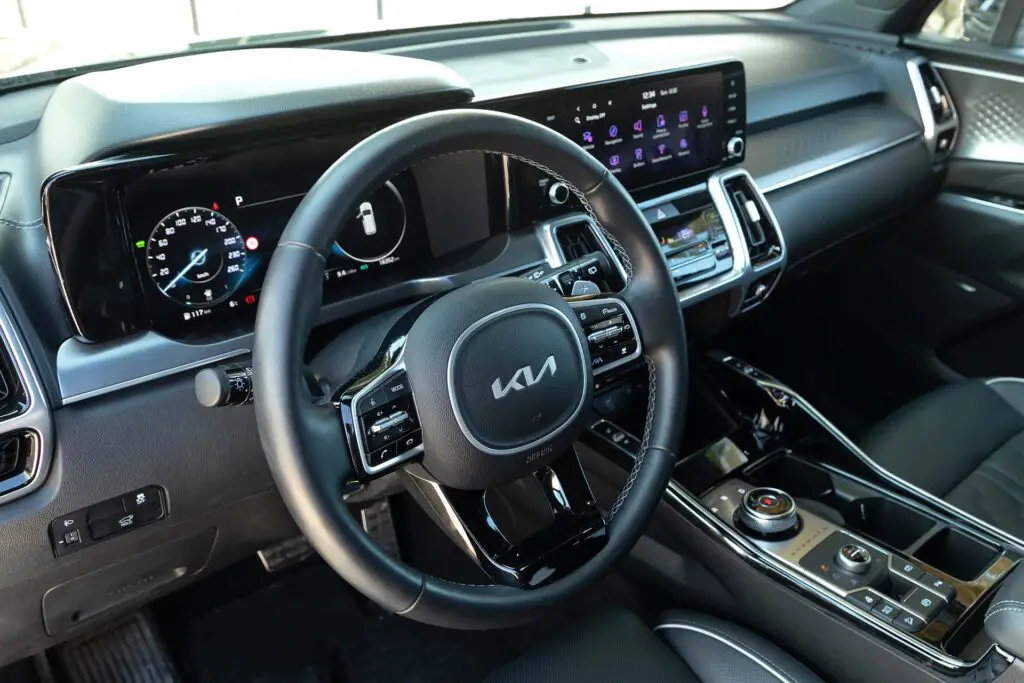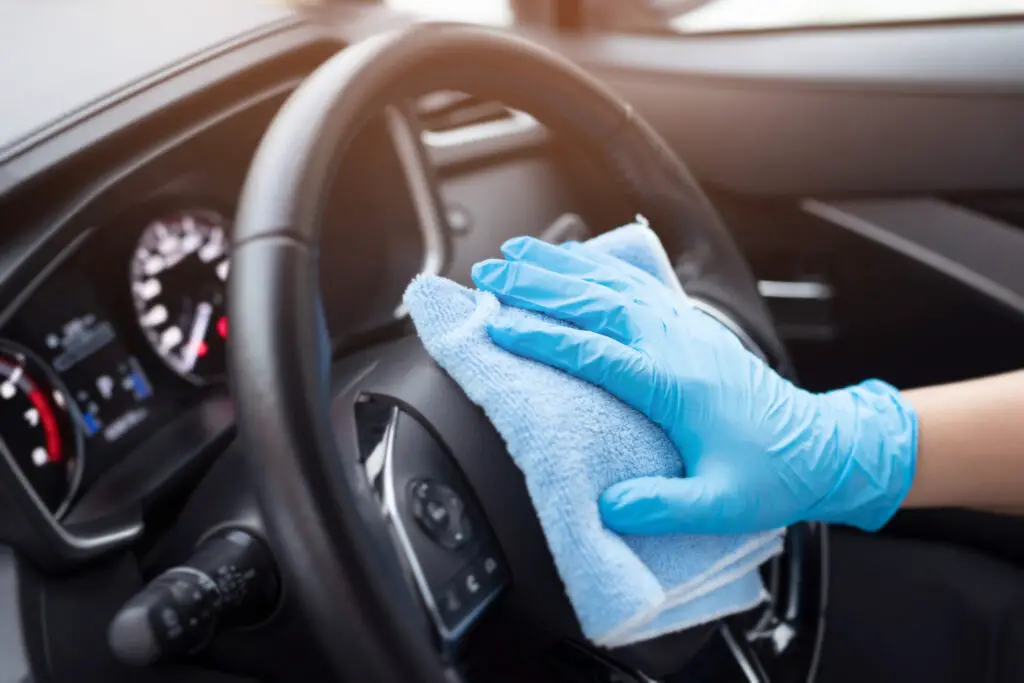Are you having trouble with your car’s onboard computer? If so, the whole ordeal can be a huge headache – but there’s no need to worry! Learning how to reset the car battery is a simple process that anyone can do with the right tools and knowledge. So, let’s walk you through all of the options as well as what to look out for in order to diagnose any issues before going to the mechanic.
What Is a Car Battery?
No matter if we’re talking about a brand-new car with a high price tag, a used vehicle, or one with a salvage title, its automotive electrical system is an intricate mechanism that provides the necessary electrical energy to start the engine and power various electrical components.
One of the most important parts of this system is the car battery, a rechargeable device that stores chemical energy and converts it into electrical energy to deliver a reliable source of power. Here are the most common types of vehicle batteries:
| Battery Type | Pros | Cons |
| Lead-Acid | An affordable and widely available option that provides high-cranking power for starting engines | Can have a limited lifespan and requires regular maintenance |
| Lithium-Ion | High energy density, providing more power with less weight and a longer lifespan | Can be expensive and might require specialized charging systems |
| Absorbent Glass Mat | Spill-proof and vibration-resistant option that can deliver high current for starting engines | Can be expensive and sensitive to overcharging, requiring proper techniques |
| Gel | Spill-proof and maintenance-free option that is suitable for deep cycle applications | Slightly lower cranking power compared to lead-acid batteries while being more expensive |
| Calcium | Lower self-discharge rates and reduced water loss, requiring less maintenance | Limited availability in some regions and requires special charging techniques |
| Nickel-Metal Hydride | High energy density and more environmentally friendly, improving fuel efficiency in hybrid vehicles | Lower power density and limited availability in newer hybrid models |
Why Is This Component Essential for Your Vehicle’s Performance?
When you turn on the car’s ignition, the battery delivers a surge of electricity to start the engine and kickstart the combustion process. It also stabilizes the voltage, ensuring proper functioning of lights, radio, air conditioning, and other electronics while the engine runs.
Regular maintenance of this component, such as checking the battery’s fluid levels, keeping the terminals clean, and replacing the cables, is crucial for ensuring optimal performance and longevity. Learning how to reset a car battery is just one piece of this puzzle, but it’ll come in handy at least once in your driving career.
Why Does It Need to Be Reset?
These essential components typically do not require being reset as they function automatically. However, in certain cases, resetting the battery may refer to performing a procedure to recalibrate or reprogram certain electrical components or systems in the vehicle.
This might be necessary when there are issues or malfunctions related to the battery or its associated system. For example, resetting is required in order to clear error codes or faults stored in the vehicle’s Engine Control System (ECU). But there’s no reason for any driving stress – this process is fairly straightforward, so let’s take a closer look at the steps you need to take.

Step 1: Turn off All Electrical Devices
Before I explain how to reset the battery on a car, there’s one crucial thing that needs to be underlined – you need to turn off all electrical devices before starting the job. This includes headlights, interior lights, radio, air conditioning, and any other electrical components. By doing so, you prevent any power surges or electrical spikes that could potentially damage the battery or other sensitive electronic systems in the vehicle.
Here are the steps you need to take in order to turn off everything:
- Park the vehicle in a safe and stationary location, ensuring that the parking brake is engaged,
- Put the transmission in park (P) or neutral (N), depending on the type of transmission,
- Turn the ignition switch to the “Off” position in order to shut off the engine and most electrical systems,
- Locate the interior light and headlight switches to turn them to the “Off” position,
- Turn off any accessories that are plugged into power outlets, such as chargers or portable devices,
- If the audio system is separate, turn it off or switch it to standby mode,
- Disable any aftermarket electronics or accessories that are installed in the vehicle, such as GPS devices or dash cameras,
- Double-check that all electrical devices are turned off, and wait a few minutes to allow any residual electrical activity to subside.
When these devices run, they use battery power. Abrupt interruptions can cause voltage fluctuations, potentially leading to system malfunctions or data loss in your car’s computer. That’s why it’s crucial not to skip this step; it ensures a safe environment for the reset process.

Step 2: Locate the Battery
Obviously, to proceed with any battery-related task such as resetting it, locate the position of this component. In most modern vehicles, the battery is typically found under the hood, in the engine bay. However, in some cases, this component might be located in the trunk or under the rear seat.
The exact location can vary depending on the vehicle’s make and model, so it’s best to consult the owner’s manual or refer to online resources specific to your car. Once you’ve found it, ensure that you have ample working space and that you can safely reach it without any obstructions.

Step 3: Disconnect the Battery
It’s finally time to get to the real stuff – here are the steps you need to take in order to disconnect this component:
- Identify the positive (+) and negative (-) terminals on the battery,
- Use an appropriately sized wrench or socket to loosen the bolt or nut securing the battery cable to the negative terminal, but avoid completely removing it at this point,
- Gently wiggle the cable to detach it from the negative terminal, while being careful not to touch any metal surfaces or the positive terminal with the disconnected cable,
- Repeat the same procedure for the positive terminal,
- Inspect the cables for any signs of damage or corrosion, and clean their ends with a terminal cleaner or a mixture of baking soda and water if necessary,
- With both battery cables disconnected, ensure they are kept away from each other and any metal surfaces to prevent accidental contact and electrical arcing.
Take Safety Precautions Before Disconnecting the Car Battery
As you can see, disconnecting this component is a fairly straightforward process, but it entails taking a few important safety precautions. First and foremost, park the vehicle in a safe and well-ventilated area, engage the parking brake, and turn off the ignition to eliminate the risk of unintentional starts.
It is recommended to wear insulated gloves and safety goggles to protect yourself from electrical shocks and any potential battery acid splashes. Additionally, remove any metal jewelry or accessories that could accidentally contact the terminals. Lastly, always follow the user’s manual and don’t take these safety guidelines lightly – staying safe is the number one driver’s responsibility.

Step 4: Wait for 15-30 Minutes
The recommended time to wait before reconnecting the battery is around 15 to 30 minutes. Even when it’s disconnected, certain components within the vehicle, such as capacitors or memory circuits, may still hold an electrical charge. So, this waiting period allows for the dissipation of any residual charge in the vehicle’s system.
You can take this time to maybe do some simple maintenance tasks around your four-wheeler – for example, you can clean the headliner or the steering wheel. Once the waiting period is over, it’s time to reverse the whole process.

Step 5: Reconnect the Battery
Reconnecting the car’s battery is essentially the same process as disconnecting, but in reverse order (positive first, then negative) while following the same safety precautions. Here’s a summary:
- Take the positive cable and position it over the positive terminal, while making sure that it’s clean and free from debris,
- Align the cable connector with the positive terminal and firmly press it down onto the terminal,
- Use an appropriate-sized wrench or socket to securely tighten the bolt or nut on the positive terminal,
- Repeat the same process for the negative cable,
- Give both terminals a gentle tug to ensure they are properly connected,
- Close the hood of the vehicle and ensure it is latched securely.
Step 6: Start the Car
After you’ve ensured that all connections are secure, it’s time to start your four-wheeler. While turning the key in the ignition, take note of any warning lights or indicators on the dashboard. The engine should crank, and if everything is in order, it will start running smoothly.
While driving along famous routes in the US, pay attention to any unusual noises, vibrations, or warning lights that may indicate potential issues. Allow the engine to run for a few minutes to ensure proper charging of the battery, and if everything appears normal, you can proceed with your intended use of the vehicle.
What to Do if the Car Does Not Start
If the car does not start, double-check the connections to ensure they are secure and properly attached. Also, clean any corrosion or debris on the terminals, and inspect the battery for signs of damage or wear.
Additionally, you should test the voltage by using a multimeter to determine if it requires charging or replacement. If these troubleshooting steps do not resolve the issue, it’s best to seek assistance from a qualified professional mechanic.

Learn How to Reset the Car Battery and Avoid Taking the Vehicle to the Mechanic
All in all, resetting the battery is fairly simple, especially when you’re well-informed on the steps and safety precautions you need to take. After you’re all done, you’ll feel much better knowing that your four-wheeler is in tip-top shape and ready to take on whatever the road has in store for it. Who knows? You might surprise yourself with what you can do with the right tools, knowledge, and a bit of determination!








